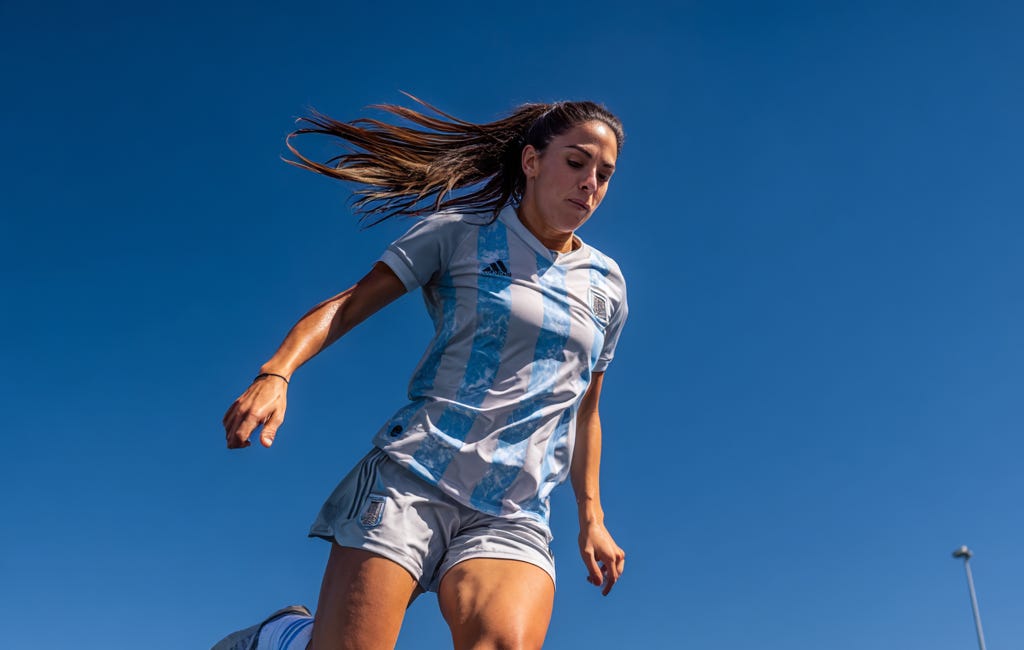Stronger Hamstrings, Safer Knees: Rethinking Nordic Training for Young Female Athletes
New study finds low-volume Nordic Hamstring routines can boost strength and guard against ACL injuries for youth girls in sport.
Knee injuries, especially ACL tears, are a major concern in youth and teen female athletes. This new study dives into whether a simple tweak in how you perform the Nordic Hamstring Exercise (NHE) could maximise hamstring strength and lower injury risk.
Key Points
Aim
The study investigated if two ways of structuring NHE sessions—Traditional Sets (TS) versus Rest Redistribution (RR)—produce different effects on eccentric hamstring strength in youth female athletes, a key factor in preventing ACL injuries.
Methods
Participants: 35 female youth soccer players (average age: ~14 years).
Design: Randomised trial with two groups: TS (n=17) and RR (n=18).
Interventions: Both groups completed a progressive, low-volume, 6-week NHE program (increasing from 6 to 18 reps per week; total 69 reps).
TS: Standard sets—complete all reps in a set, then rest.
RR: Same total reps and rest per session, but rest periods were broken into more frequent, shorter intervals.
Testing: Eccentric hamstring strength measured before and after, using NordBord (body-mass-adjusted force) and isokinetic dynamometry at two speeds (60°/s, 180°/s; testing peak torque and torque at various knee angles).
Results
Both NHE formats increased eccentric hamstring strength (EHS).
TS group: Moderate improvements in both legs (up to ~11% increase).
RR group: Small but significant improvement in the left leg only (~4% increase); right leg change was trivial.
Isokinetic testing: Small increases in peak torque and torque at longer knee angles (40°, 60°, 80°) in both groups.
No significant differences between the two set structures for any strength outcome.
Strength improvements occurred with very low weekly volume (just ~12 reps/week).
Neither approach produced marked gains in hamstring strength at very long muscle lengths (20° knee flexion angle).
Nordic Hamstring Exercise Effects on Balance and Strength
Are you constantly worried about hamstring injuries derailing your training progress? This interesting study reveals how a simple 4-week training protocol could significantly improve your balance and reduce injury risk while building stronger hamstrings.
Practical Takeaways
You don’t need high volumes of Nordic Hamstring work to significantly boost hamstring strength in youth female athletes—just 1–3 sets a week, totalling about 12–18 reps, can make a measurable difference in under 6 weeks.
The way you structure the sets (all reps at once vs. more frequent, shorter rests) doesn’t impact the strength gains, so coaches have flexibility in how they program the NHE—choose what fits the athlete's preference or training flow best.
Eccentric hamstring strength, as developed by this protocol, mostly improves at moderate, not long, muscle lengths. To maximise hamstring injury protection, especially for ACL risk, it’s smart to add exercises that train the hamstring at its end range (e.g., band-assisted Nordics, straight-leg exercises).
Study Takeaways
Both traditional and rest-redistributed NHE protocols improve eccentric hamstring strength in youth female athletes, and both are equally effective.
Short, simple NHE routines (just 69 total repetitions over 6 weeks) can be safely and practically integrated into youth resistance programs for low-cost injury prevention.
To increase EHS at longer muscle lengths, combine NHE with other hamstring exercises that challenge the end-range of motion.
This evidence supports including the NHE for ACL injury reduction in youth females, but don’t rely on it alone for complete coverage—variety remains important.
In summary, coaches and parents can confidently introduce simple, low-volume NHE routines in youth girls’ training, knowing it helps protect knees without burning out athletes or requiring special equipment or complicated programming.
Reference
Bounias, Thibaut1; Henry, Greg1,2; Goswami, Ramnath1; Moran, Jason3; Behm, David G.4; Drury, Benjamin1,2. Effects of Nordic Hamstring Exercise Set Configuration on Eccentric Hamstring Strength Changes in Youth Female Athletes. Journal of Strength and Conditioning Research 39(8):p 829-836, August 2025. | DOI: 10.1519/JSC.0000000000005139
You can also find me at dannyleejames.com for stories, personal training insights, and coaching.





